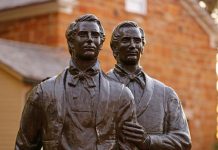
Most of us know that when Joseph Smith was a young boy, he had a surgical operation on his leg. We learn about everything from his mother’s devastated cries to Joseph’s desire to abstain from alcohol prior to the surgery — but the one thing we don’t typically hear much about is perhaps the most fascinating aspect of the whole story: the operating surgeon.
Several years ago, BYU Studies published an article about this surgery entitled “Joseph Smith’s Boyhood Operation: An 1813 Surgical Success” by surgeon Leroy S. Wirthlin. (Bonus: You can download the article for free!) The article’s focus is to “examine Joseph Smith’s illness and operation in its historical setting and to examine the surgical contributions of Nathan Smith as they relate to this episode.”
The article certainly accomplishes that — it discusses in detail Dr. Smith’s significant contribution to Joseph’s life and to medicine as a whole — but, perhaps even more importantly, it accomplishes something deeply spiritual: the ability to see how God’s hand was in Joseph’s life from a very early age.
What was wrong with Joseph, anyway?
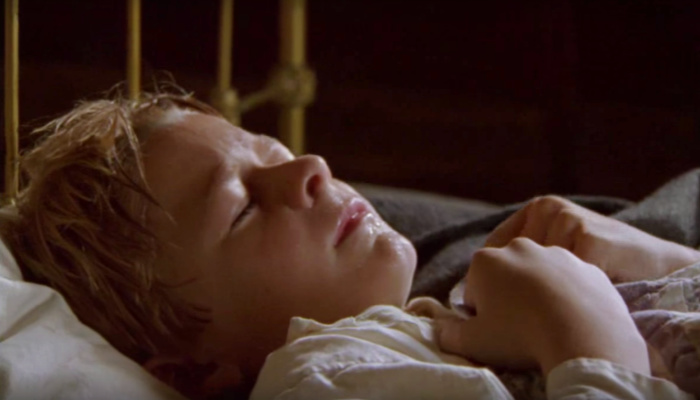 We know that Joseph had this operation, but the “why” sometimes eludes us — and that’s understandable, because frankly, what happened was kind of complicated.
We know that Joseph had this operation, but the “why” sometimes eludes us — and that’s understandable, because frankly, what happened was kind of complicated.
Firstly, Joseph, probably around the age of seven (he said he was probably five or “thereabouts”), caught typhoid fever. This sometimes-fatal bacterial disease is characterized by a high fever, gastrointestinal distress, and vomiting. Unluckily for Joseph, the pain didn’t stop there — the disease traveled and he ended up with a painful abscess under his arm.
But how did it end up in his leg?
“The stage was now set for the most serious complication. With Joseph debilitated by typhoid fever and suffering from an undrained abscess of considerable size, bacteria from the abscess spread by way of the bloodstream into the tibia of his left leg. The pain in the leg was acute, unrelenting and severe.”
What started out as typhoid fever ended up leaving Joseph with a severely infected bone (a condition called “osteomyelitis”) in his leg — a leg that now, Joseph’s doctors thought, needed to be amputated.
Until Dr. Nathan Smith came on the scene.
Who was Dr. Nathan Smith?
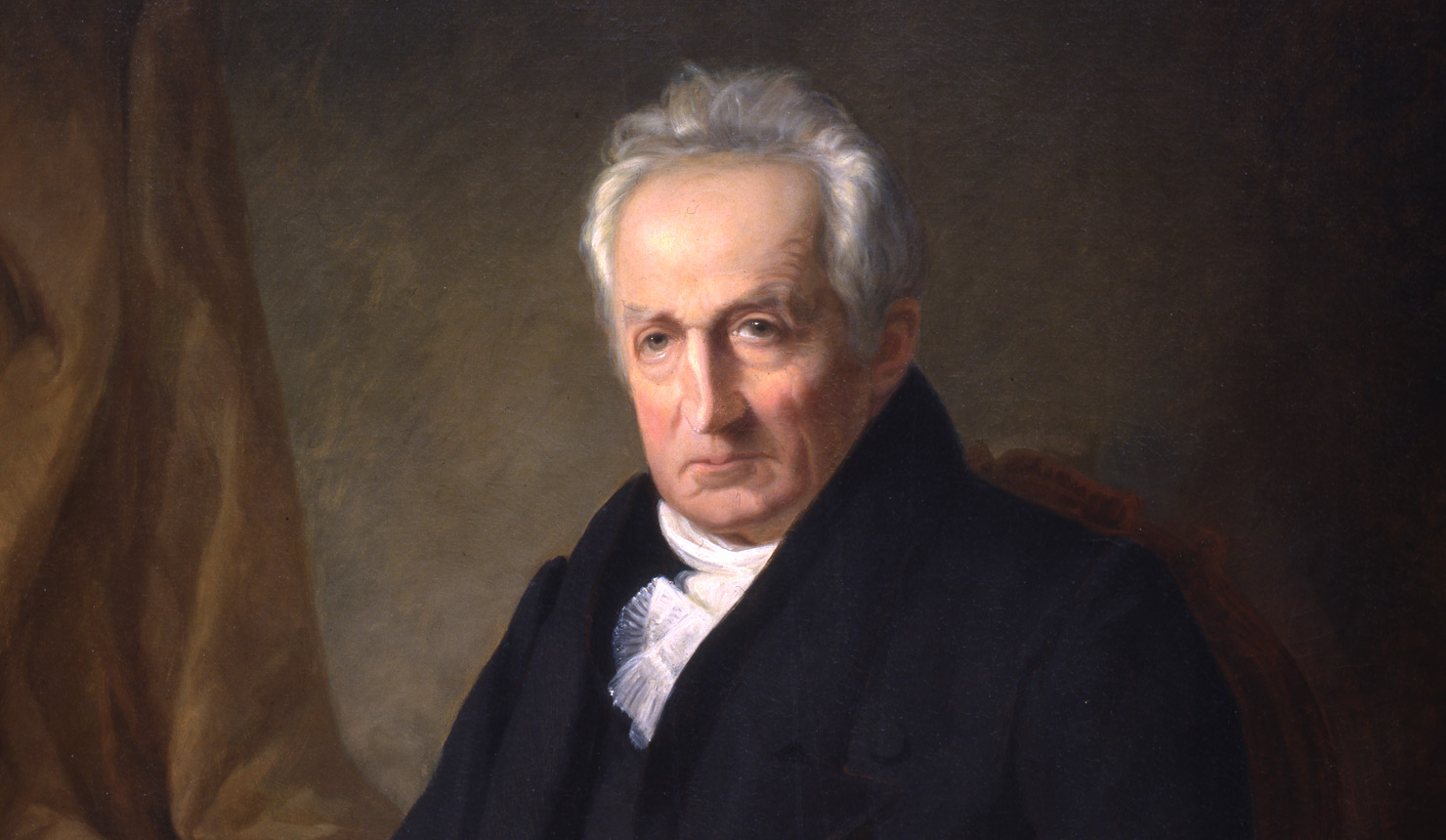
In describing Dr. Smith, Wirthlin’s article says it best: “Nathan Smith had gained a wide reputation in New England as a successful surgeon based on his achieving good results under difficult, almost hopeless, conditions. Also, he carried out operations that few in his day dared, and he was successful with these unusual procedures.”
It’s important to recognize that Dr. Smith was way ahead of his time — he utilized practices similar to what we use today, but that were not fully accepted by the medical community until about 100 years past his employment of them. Until after WWI, amputation was the accepted and used practice for an infection like Joseph’s, so to say that it was a blessing that Dr. Smith was the doctor to treat a young Joseph is an understatement — it was nothing short of a miracle.
It’s similarly miraculous that Dr. Smith was even in the area (New Hampshire, where Jospeh’s family lived) when Joseph needed him; he was actually supposed to be nearly 170 miles away in Connecticut. However, a respiratory disease was circulating in New England at the time (1813) and it affected his family, forcing him to stay in New Hampshire longer than he had planned.
Because of these events, Dr. Nathan Smith was in the right place at the right time to operate on Joseph.
Joseph’s Surgeries
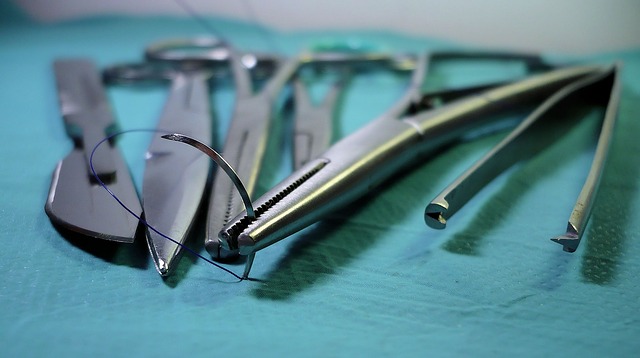 Prior to Dr. Smith’s surgery, Joseph underwent three separate procedures. First, a doctor drained the abscess under Joseph’s arm (don’t read this if you’re squeamish, but the abscess discharged a QUART, or about four cups, of liquid… Excuse me while I go vomit); later, Joseph received a long incision in his leg that provided some relief; then, a few weeks after that, this same practice was performed again in hopes to drain the bone.
Prior to Dr. Smith’s surgery, Joseph underwent three separate procedures. First, a doctor drained the abscess under Joseph’s arm (don’t read this if you’re squeamish, but the abscess discharged a QUART, or about four cups, of liquid… Excuse me while I go vomit); later, Joseph received a long incision in his leg that provided some relief; then, a few weeks after that, this same practice was performed again in hopes to drain the bone.
Unfortunately, none of these attempts to heal Joseph’s leg worked. Finally, a council of surgeons was called together and decided there was no remedy and the leg had to be amputated.
Joseph’s mother, Lucy Mack Smith, wrote about this experience:
“Now I said gentlemen (for there were 7 of them) what can you do to save my boys leg They answered we can do nothing we have cut it open to the bone and find the bone so affected that it is incurable.”
Despite their answer, Lucy begged them to try another practice that she’d likely heard about because of Dr. Smith’s fame in the area: removing the infected portion of bone rather than amputating the entire leg.
Since it wasn’t a medically accepted practice, this surgery was considered experimental. Dr. Smith probably made Joseph’s family aware of this, since Joseph writes in his own words:
“But, young as I was, I utterly refused to give my assent to the operation [amputation], but I consented to their Trying an experiment by removing a great large portion of the bone from my left leg, which they did.”
As Joseph wrote, the surgeons did perform this experimental operation — and it was a success.
The Miracle of Dr. Smith
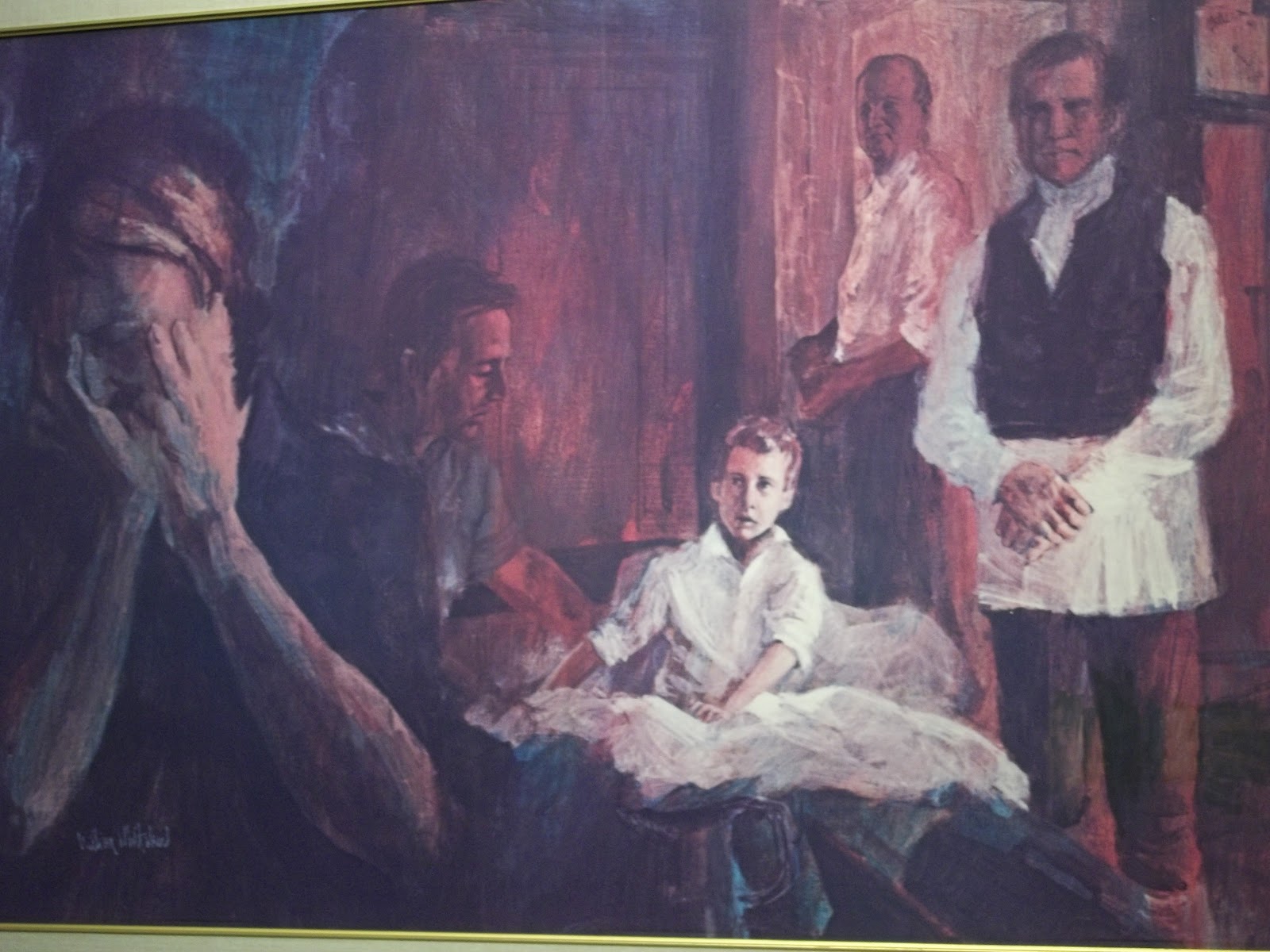
Wirthlin writes, “The study of Nathan Smith’s surgical techniques corroborates details mentioned in both Joseph Smith’s and Lucy Mack Smith’s accounts of the procedure; indeed we can appreciate that Lucy Mack Smith’s detailed reporting was highly accurate.
The procedure described by Lucy Smith was a standard operation for Nathan Smith and his students in northern New England. When Nathan Smith entered the Joseph Smith home, he brought with him a fifteen-year experience with his technique of sequestrectomy and drainage. He had more experience with osteomyelitis than anyone had previously recorded in the medical literature in the English language. Although he enjoyed good results, his work and results were not repeated until the early twentieth century” (emphasis added).
It was miraculous that Dr. Smith had the knowledge he did a century ahead of everyone else — and that he was the one able to perform on Joseph when probably any other doctor would have insisted that he have his leg removed.
“In 1813, the paths of two unusual individuals crossed: Nathan Smith—American medical pioneer in the prime of his surgical career—and Joseph Smith—a seven-year-old boy from a humble family, struggling for health, yet to make his mark in the world. The contribution of Nathan Smith to the recovery of young Joseph Smith should be remembered and listed with his other accomplishments.”
Dr. Smith likely had no idea that the boy whose leg (and perhaps life, if the infection had spread further) he saved would grow up to be one of the most influential and important people in history. He simply did his job, directed and guided, perhaps unknowingly, by God’s hand.
And for that — for Dr. Nathan Smith — we should be forever thankful.



